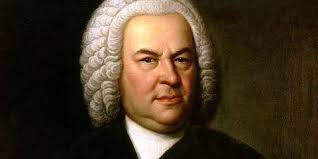The Brandenburg Concertos by Johann Sebastian Bach stand among the crowning achievements of Baroque music. Composed in the early 18th century, these six concertos display an extraordinary range of musical styles and instrumental combinations. Their enduring popularity is a testament to Bach’s genius, blending technical brilliance with expressive beauty.
Origins and Dedication
In 1721, while serving as Kapellmeister (music director) at the court of Prince Leopold of Anhalt-Cöthen, Bach compiled and dedicated the six concertos to Christian Ludwig, Margrave of Brandenburg-Schwedt. This nobleman, an avid music lover, had requested some of Bach’s compositions after hearing him play in Berlin in 1719.
The dedication page, written in elegant French, refers to the collection as “Six Concerts Avec plusieurs Instruments” — six concertos with several instruments. This diverse instrumentation and stylistic variety make the Brandenburg Concertos unique, even among Bach’s vast output.
A Showcase of Innovation
Each concerto in the collection is distinct, both in form and instrumentation. Bach did not compose them all at once; instead, he curated and revised earlier works into this remarkable set. Let’s take a closer look at the innovations found within:
- Concerto No. 1 in F major, BWV 1046 features horns, woodwinds, and strings, suggesting a courtly, festive atmosphere.
- Concerto No. 2 in F major, BWV 1047 is renowned for its challenging trumpet part, accompanied by recorder, oboe, violin, and continuo.
- Concerto No. 3 in G major, BWV 1048 uses a trio of violins, violas, and cellos, emphasizing pure string texture.
- Concerto No. 4 in G major, BWV 1049 combines solo violin and two recorders, exploring intricate contrapuntal interplay.
- Concerto No. 5 in D major, BWV 1050 is especially famous for its virtuosic harpsichord cadenza in the first movement — an unprecedented spotlight for the keyboard in a concerto.
- Concerto No. 6 in B-flat major, BWV 1051 omits violins entirely, focusing on lower strings and violas, creating a darker, richer sound.
Reception and Rediscovery
Surprisingly, the Brandenburg Concertos were largely ignored during Bach’s lifetime. The Margrave likely never had them performed, and the manuscript remained in his library, largely untouched. It wasn’t until the 19th century, with the revival of interest in Bach’s music, that the concertos gained widespread recognition.
The original manuscript, rediscovered in the archives of the Prussian State Library, was published in 1850 — the year of the Bach Gesellschaft’s founding, an organization devoted to publishing Bach’s complete works.
Legacy and Influence
Today, the Brandenburg Concertos are considered essential repertoire for both period and modern ensembles. Their variety, inventiveness, and exuberance continue to captivate audiences around the world.
Beyond their musical significance, the concertos highlight Bach’s deep understanding of instrumental color and his skill in adapting forms like the concerto grosso into something unmistakably personal and forward-looking.
Conclusion
The Brandenburg Concertos are more than just a collection of instrumental works — they are a brilliant fusion of Baroque elegance and technical mastery. From their quiet beginnings in the court of Cöthen to their current status as masterpieces of Western music, these compositions remind us of Johann Sebastian Bach’s timeless ability to innovate and inspire.


Comments are closed